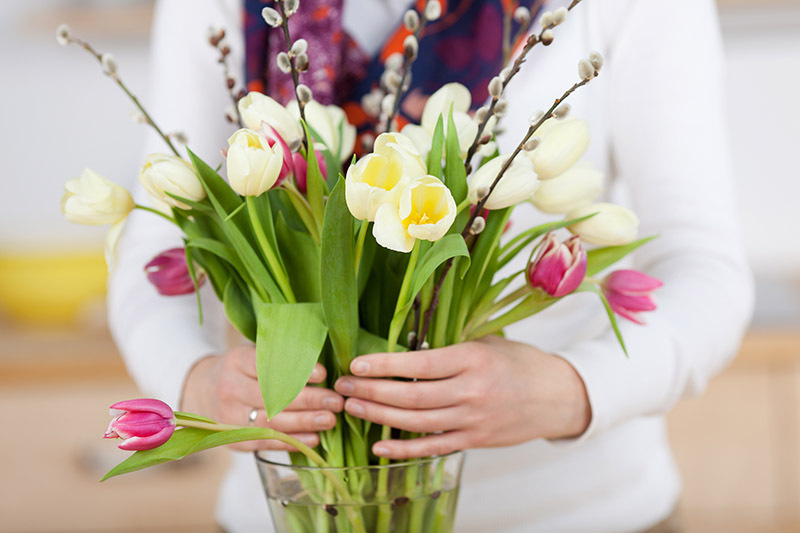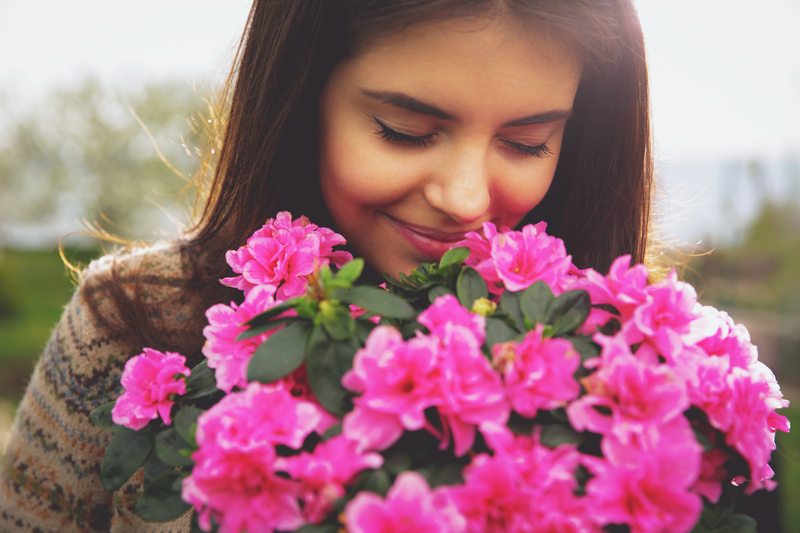Your Essential Guide to Making Poinsettias Last
Posted on 13/08/2025
Your Essential Guide to Making Poinsettias Last
Poinsettias are the quintessential holiday plant, gracing homes with their vibrant hues and iconic festive charm every winter. But these stunning plants are more than just a December decoration--they have the potential to brighten your home for months or even years if cared for correctly. Welcome to Your Essential Guide to Making Poinsettias Last, where you'll discover all the tips, tricks, and in-depth knowledge you need to prolong the beauty and vitality of your poinsettias well beyond the holiday season.
Understanding the Poinsettia: More Than a Holiday Plant
Poinsettias (Euphorbia pulcherrima) are native to Mexico and Central America, where they grow as shrubs and can reach heights of 10-15 feet. Contrary to popular belief, the vibrant red "petals" are actually bracts--specialized leaves--that surround small, yellow flowers called cyathia. The bracts can also appear in hues of pink, white, gold, or even marbled combinations, making poinsettia plants a versatile and attractive decor choice year-round.
Fast Facts About Poinsettias
- Botanical Name: Euphorbia pulcherrima
- Origin: Mexico and Central America
- Lifespan: Can last for years with proper care
- Colors: Red, Pink, White, Cream, Variegated
- Significance: Symbol of holiday cheer and hope

How to Make Your Poinsettia Last: Step-by-Step Care
1. Selecting a Healthy Poinsettia
Ensuring your plant thrives begins with choosing the right specimen at the nursery or store. Look for a plant with:
- Deep green foliage down to the soil line.
- Bright, unblemished bracts with no wilting or browning.
- Little or no yellowing of the leaves.
- Tightly clustered, greenish-yellow cyathia (the true flowers in the center). Once these start dropping, the plant's peak display is over.
2. Perfect Placement: Lighting & Temperature
Poinsettias demand the right light and temperature to flourish:
- Light: Place in bright, indirect sunlight. Around 6 hours daily is ideal. Direct sun can scorch leaves, but too little light will cause them to fade and drop leaves.
- Temperature: Maintain a steady temperature between 65?F and 75?F (18?C-24?C) during the day. Avoid temperatures below 50?F (10?C), which can harm the plant.
- Avoid cold drafts from windows or heat from radiators and appliances. Sudden temperature changes stress the plant, causing bract and leaf drop.
3. Watering Poinsettias for Longevity
Overwatering is the number one killer of poinsettia flowers. Keep the following in mind:
- Water only when the soil feels dry to the touch about 1 inch below the surface.
- Avoid letting the plant sit in standing water. Remove foil pot covers or punch holes at the bottom for drainage.
- Provide a thorough soaking, but allow excess water to drain away.
- Reduce water in the winter months when the plant's growth slows.
4. Humidity & Air Circulation
Poinsettia care is enhanced by proper humidity:
- Maintain humidity around 50-60% if possible, especially in homes made dry by winter heating.
- Use a pebble tray under your poinsettia or mist lightly (but not on the bracts--mist only the leaves).
- Provide gentle air flow but avoid direct drafts from fans or vents.
Extending the Lifespan of Your Poinsettia Beyond the Holidays
With attentive care, you can make your poinsettias last far past Christmas--sometimes for years. Here's how to nurture your plant month by month:
Post-Holiday Care (January-March)
After the festive season, your poinsettia's bracts may fade, but don't discard the plant.
- Keep the plant in bright, indirect sunlight and water as needed.
- If leaves begin to yellow or drop, don't be alarmed--it's natural after bract show.
- Fertilization: Begin feeding your poinsettia every two weeks with a balanced, water-soluble fertilizer (like 20-20-20) once you notice new growth.
Spring & Summer (April-September)
- In April, prune the stems back to 4-6 inches above the soil to promote bushier growth.
- Repot if needed into a slightly larger container with fresh, well-draining potting mix.
- Put the plant outdoors once nighttime temperatures stay above 55?F, but avoid full midday sun.
- Continue regular watering and feeding. Pinch back new shoots in June, July, and August to maintain compact shape and encourage branching.
Preparing for Holiday Bloom (October-December)
The critical step in poinsettia reblooming is provided by manipulating light exposure:
- Starting in late September or early October: provide complete darkness for 14 hours nightly (from about 5:00 p.m. to 7:00 a.m.) for 8-10 weeks. Cover plants with a box or place in a dark room.
- During the day (10 hours), move to bright, indirect light and continue watering and fertilizing.
- Expose to steady temperatures (60-70?F/15-20?C) during this time.
- By late November or early December, bracts will begin to color up again, heralding another festive season.
Top Tips for Long-Lasting Poinsettia Beauty
- Remove decorative foils or punch drainage holes: Poor drainage is the most common cause of root rot in holiday poinsettias.
- Inspect weekly for pests like whiteflies, spider mites, or aphids. Household insecticidal soap sprays work well if pests are found.
- Keep away from fruit bowls: Ripening fruits emit ethylene gas, which can cause premature bract drop.
- Don't fertilize when in full bloom (typically December-January). Start fertilizing when new green leaves emerge.
Common Poinsettia Problems & Solutions
Yellowing Leaves
- Likely Cause: Overwatering or cold drafts.
- Solution: Ensure pot has drainage; adjust watering schedule; move away from doors/windows if exposed to chills.
Leaf Drop
- Likely Cause: Sudden temperature change, drafts, or shock from moving.
- Solution: Keep plant in a stable, well-lit location. Minimize relocating.
Pale or Faded Bracts
- Likely Cause: Inadequate light.
- Solution: Move to a brighter spot, but out of direct sun.
Are Poinsettias Poisonous? Myths and Facts
One of the most persistent myths about poinsettias is their so-called toxicity. In reality, poinsettias are only mildly toxic if ingested and usually cause only mild irritation or stomach upset in pets or children. However, sap may cause minor skin irritation, so always wash hands after handling. Use caution, but there's no reason to fear your beautiful plant.
Poinsettia Varieties: Red, White, Pink--and Beyond
Did you know? There are over 100 varieties of poinsettias, offering different colors and sizes to match any decor.
- Classic Red (Prestige Red, Freedom Red): The traditional holiday choice.
- White/Cream (Jingle Bells, Winter Rose): For a snowy look.
- Pink and Marble (Pink Peppermint, Monet Twilight): A twist on the classic.
- Bicolor and Novelty (Ice Punch, Princettia): Unique for modern settings or gifts.
Poinsettia Care Throughout the Year: A Quick Calendar
- December-January: Display and water as needed. Keep warm and away from drafts.
- February-March: Reduce watering as bracts and leaves drop. Move to a sunny window.
- April: Prune back to 4-6" stems; resume watering and fertilizing as new growth appears.
- May-September: Outdoors optional, regular feed, pinch back for shape, repot if needed.
- October-November: Begin darkness/light cycle. Watch for colored bracts.

Frequently Asked Questions for Making Poinsettias Last
Can you keep poinsettias as houseplants all year round?
Absolutely. With consistent care--light, water, warmth--poinsettias can thrive as perennials indoors. Their resilient nature allows them to build up energy through the year for brilliant color next winter.
Why do my poinsettia leaves keep falling off?
The most common causes are overwatering, low humidity, sudden temperature changes, or lack of sunlight. Review your poinsettia care routine to ensure optimal conditions.
How do I get my poinsettia to rebloom?
The darkness/light routine is key. Ensure 14 hours of uninterrupted darkness each night for at least 8 weeks starting in fall. Consistency is crucial for reliable reblooming!
Can poinsettias be grown outdoors?
In USDA Hardiness Zones 9-11, poinsettias can be grown outdoors as small shrubs. In colder regions, treat them as houseplants or move outside only during warm months.
Summary: Keep Your Poinsettia Stunning Year After Year
With proper care, you can make your poinsettias last far beyond the holidays. By focusing on selecting healthy plants, providing ideal light and temperature, watering correctly, and following a simple annual care calendar, you can enjoy these vibrant beauties every season. Their dazzling colors, festive symbolism, and decorative appeal make poinsettias a cherished plant that rewards you for years with just a bit of attention.
Embrace the full life cycle of your poinsettias--and let them serve as a reminder that a little nurturing can bring joy long after the ornaments and lights are packed away. Happy growing!
Latest Posts
Best Birthday Flowers to Send for an Unforgettable Day
Your Essential Guide to Making Poinsettias Last
5 beloved flower choices to mark Valentine's Day with affection





